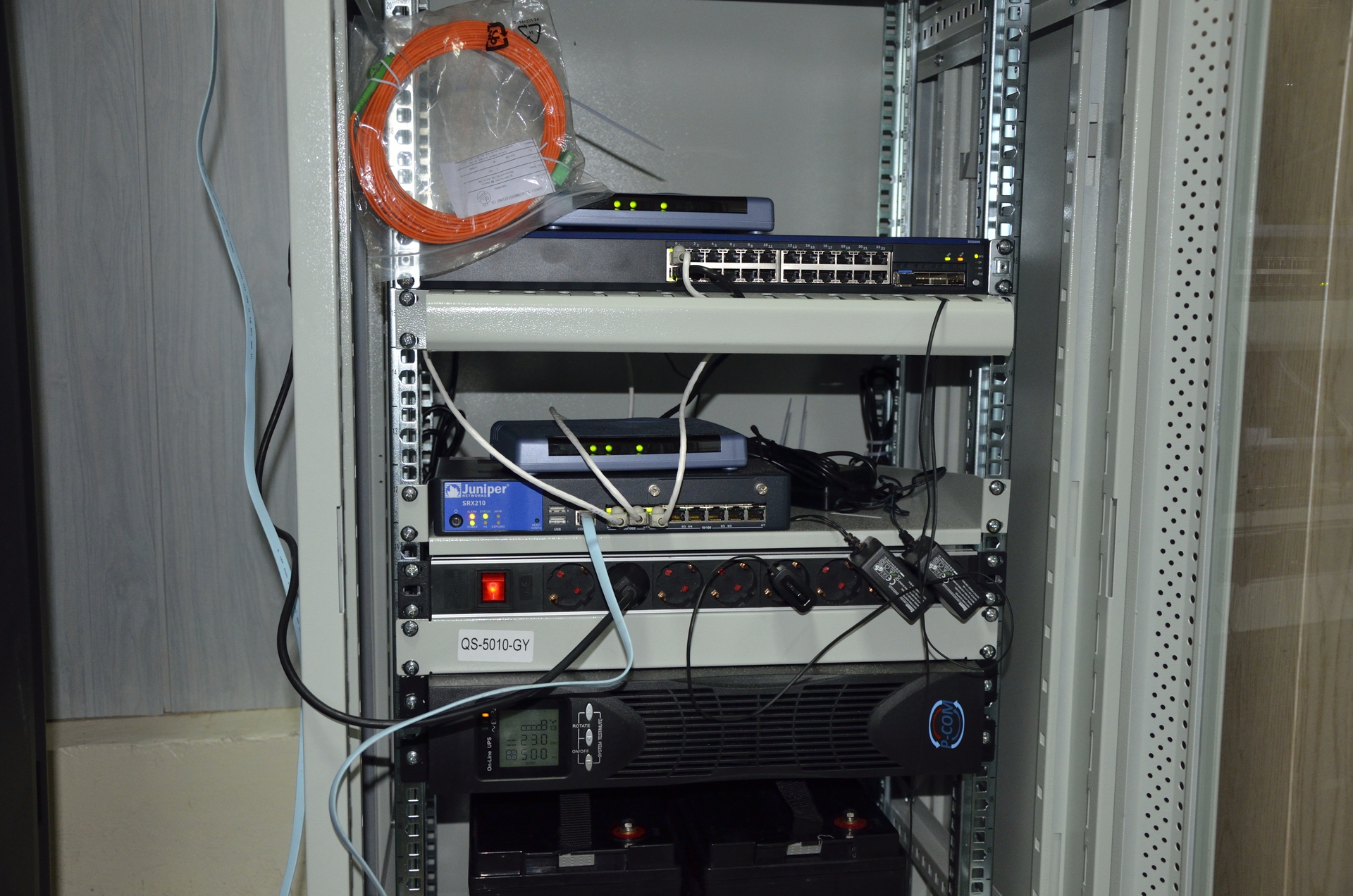Cisco vs. Juniper
Five years ago, it was generally accepted that about 80 percent of the installed network equipment in the world came from Cisco products. According to my observations, as well as articles in various forums, it seems that the powerful network giant has been heavily pressed. Of course, some already well-known and well-sold brands like QUTECH occupy their niche, but so far they are quite modest in the sense of backbone networks (especially IP / MPLS), as well as in scope of application. But Juniper products confidently occupy cabinets with network equipment of operators, including such large ones as MTS and Rostelecom.
In my (somewhat modest) experience, MTS in a number of regions uses Juniper MX 480 equipment on its networks as the so-called long-haule, in other words, an “intra-zone medium-length network”. And the trunk rings are built on Juniper’s powerful high-performance platforms using IP / MPLS routing technology.
A similar picture is observed in Rostelecom. Moreover, as the client equipment, preference is given to the 24-port EX-2200 switch and the SRX210 router. Apparently, this is a fairly economically successful bunch. Such equipment begins to be used to organize IP VPN services, in particular, for large state customers.
The equipment of both companies uses different software. At Cisco it is IOS, at Juniper - JunOS. According to some reviews, the latest operating system is more convenient. Both of them use the CLI - command line interface. Juniper’s configuration is very similar to C language - the command should end with a “;” - otherwise the compiler will throw an error. Conveniently, both in the switch and in the router, you can “upload” the finished configuration file previously created in a text editor on the computer. You can edit the config directly in the device by connecting with a console cable using a laptop or a desktop computer using the well-known free PuTTY program.
In general, the experience with these devices left a pretty good impression. Workmanship is also up to par. For example, the EX-2200 is simply nice to pick up, despite the fact that it is a rather large device of 19 inches format.
Large providers (for example, Rostelecom) are increasingly using Juniper products as trunk routers. And if earlier the M40e platforms were already used, now the T4000 equipment is already actively being introduced. The latter is quite noisy at work; if you stand on the side of the fans, then the pressure and air temperature are such that you can dry the towel.
So who will win? Some players leave the scene. For example, the products of the reputable 3com company are rarely found anywhere. Will Cisco lose ground? What are the forecasts for Juniper? Personally, I like the products of both companies. And which is especially important, both take care of providing materials for studying both equipment and the principles of routing and switching. But while in this matter, Cisco, of course, is ahead. What is only one Cisco Academy, whose regional branch gave me CCNA knowledge. But, nevertheless, Juniper cannot but cause sympathy. We wish him good luck.

In my (somewhat modest) experience, MTS in a number of regions uses Juniper MX 480 equipment on its networks as the so-called long-haule, in other words, an “intra-zone medium-length network”. And the trunk rings are built on Juniper’s powerful high-performance platforms using IP / MPLS routing technology.
A similar picture is observed in Rostelecom. Moreover, as the client equipment, preference is given to the 24-port EX-2200 switch and the SRX210 router. Apparently, this is a fairly economically successful bunch. Such equipment begins to be used to organize IP VPN services, in particular, for large state customers.
The equipment of both companies uses different software. At Cisco it is IOS, at Juniper - JunOS. According to some reviews, the latest operating system is more convenient. Both of them use the CLI - command line interface. Juniper’s configuration is very similar to C language - the command should end with a “;” - otherwise the compiler will throw an error. Conveniently, both in the switch and in the router, you can “upload” the finished configuration file previously created in a text editor on the computer. You can edit the config directly in the device by connecting with a console cable using a laptop or a desktop computer using the well-known free PuTTY program.
In general, the experience with these devices left a pretty good impression. Workmanship is also up to par. For example, the EX-2200 is simply nice to pick up, despite the fact that it is a rather large device of 19 inches format.
Large providers (for example, Rostelecom) are increasingly using Juniper products as trunk routers. And if earlier the M40e platforms were already used, now the T4000 equipment is already actively being introduced. The latter is quite noisy at work; if you stand on the side of the fans, then the pressure and air temperature are such that you can dry the towel.
So who will win? Some players leave the scene. For example, the products of the reputable 3com company are rarely found anywhere. Will Cisco lose ground? What are the forecasts for Juniper? Personally, I like the products of both companies. And which is especially important, both take care of providing materials for studying both equipment and the principles of routing and switching. But while in this matter, Cisco, of course, is ahead. What is only one Cisco Academy, whose regional branch gave me CCNA knowledge. But, nevertheless, Juniper cannot but cause sympathy. We wish him good luck.

